A new museum honors the ties that bind Black communities to horse culture
The museum also commemorates the life of Mary Fields, the first Black woman to work for the U.S. Postal Service.
By Mariana Navarrete Villegas, CT Mirror
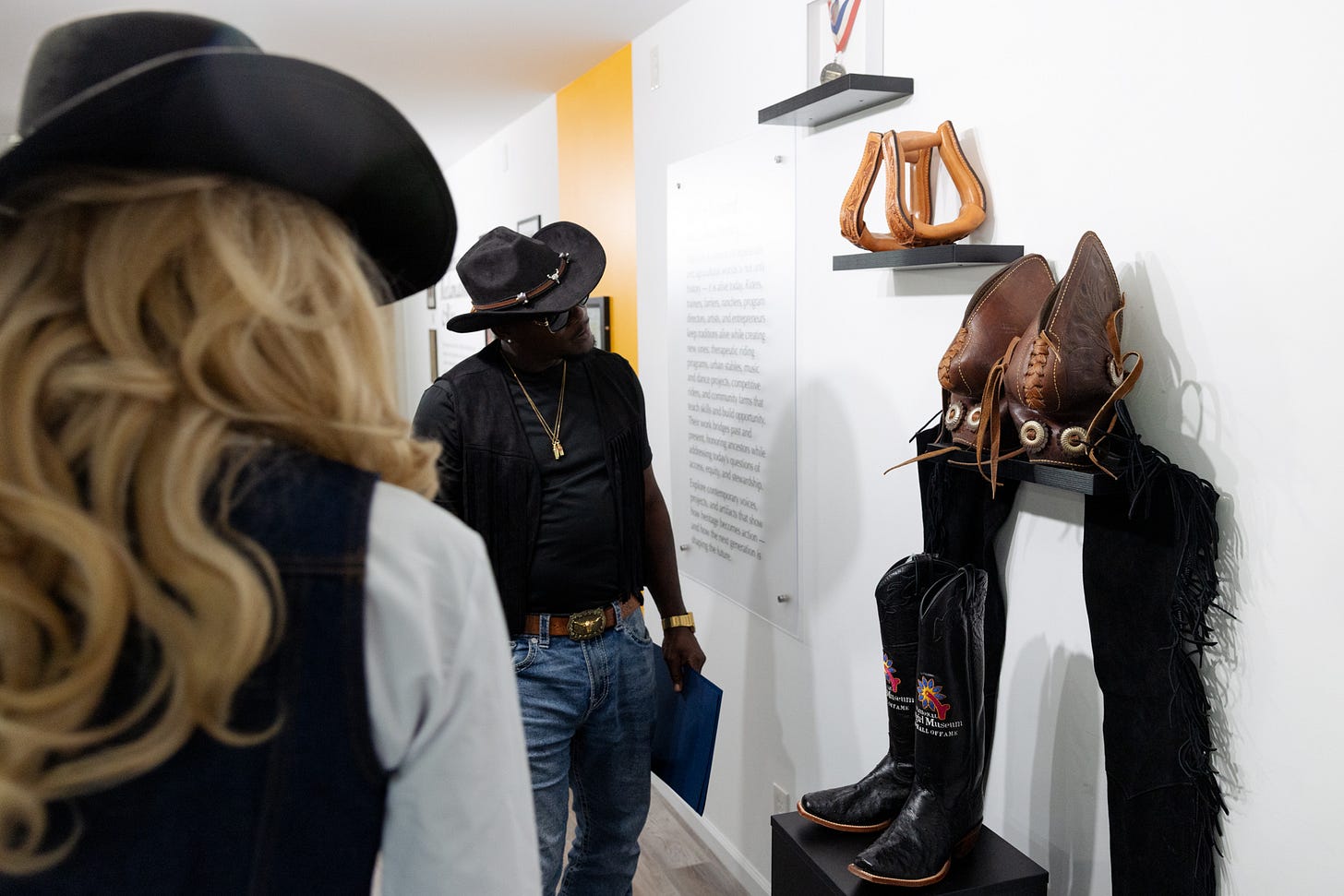
On a sunny Friday morning, horses’ nickerings and children’s laughter could be heard at the opening of The Mary Fields Horse and Heritage Museum in Hartford’s North End.
“It’s a community museum, and heavy on the ‘community’, and so that means it belongs to you,” Heather R. Lawson, chairwoman of the Ebony Horsewomen, Inc. board of directors, said through the microphone as she faced the group of adults and Martin Luther King Jr. Middle School students sitting in chairs on the lawn.
The museum commemorates the first African American woman to work for the U.S. Postal Service, as well as the history of the Black equestrian, horsewomen and men across the country. It serves as a cultural landmark and archival center in the city’s North End.
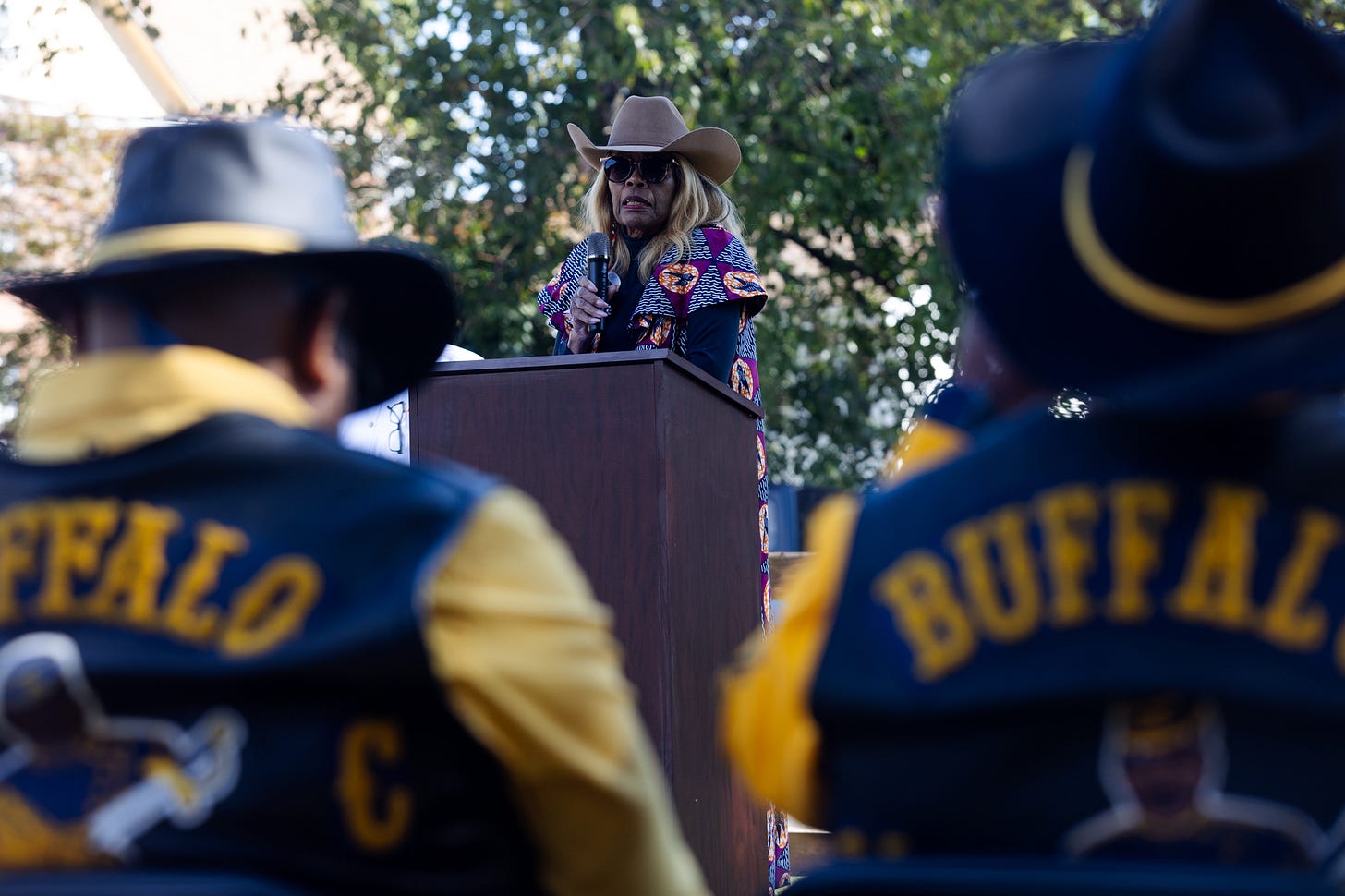
Historians and anthropologists have studied the exclusion of African Americans in the Wild West cowboy and rodeo history. Lawson said the museum aims to fill the gap of this erasure.
“A lot of people made up the fabric of America, and there’s a lot of history to be told. Some of it is more mainstream, and many of us know about it, and some is a little bit more hidden, but it’s worth seeking out the knowledge so that you can see yourself as part of America’s story,” Lawson said.
During the ceremony, organizers acknowledged everyone who took part in building the museum since Patricia E. Kelly, president of Ebony Horsewomen, wrote a grant request in 2017 seeking financing for the project.
Founded by Kelly in 1984, Ebony Horsewomen, Inc. has spent over 40 years serving youth, families, and veterans with equine therapy and cultural programs, through the bond of humans and horses.
“Mary Fields was a woman of extreme courage, extreme resilience, and who had a lot of grit, and that kind of embodies everything that we do here at Ebony Horsewomen,” Lawson said.
After Fields’ monologue “Mary Speaks” was performed, attendees toured the inside of the museum and the horse stables.
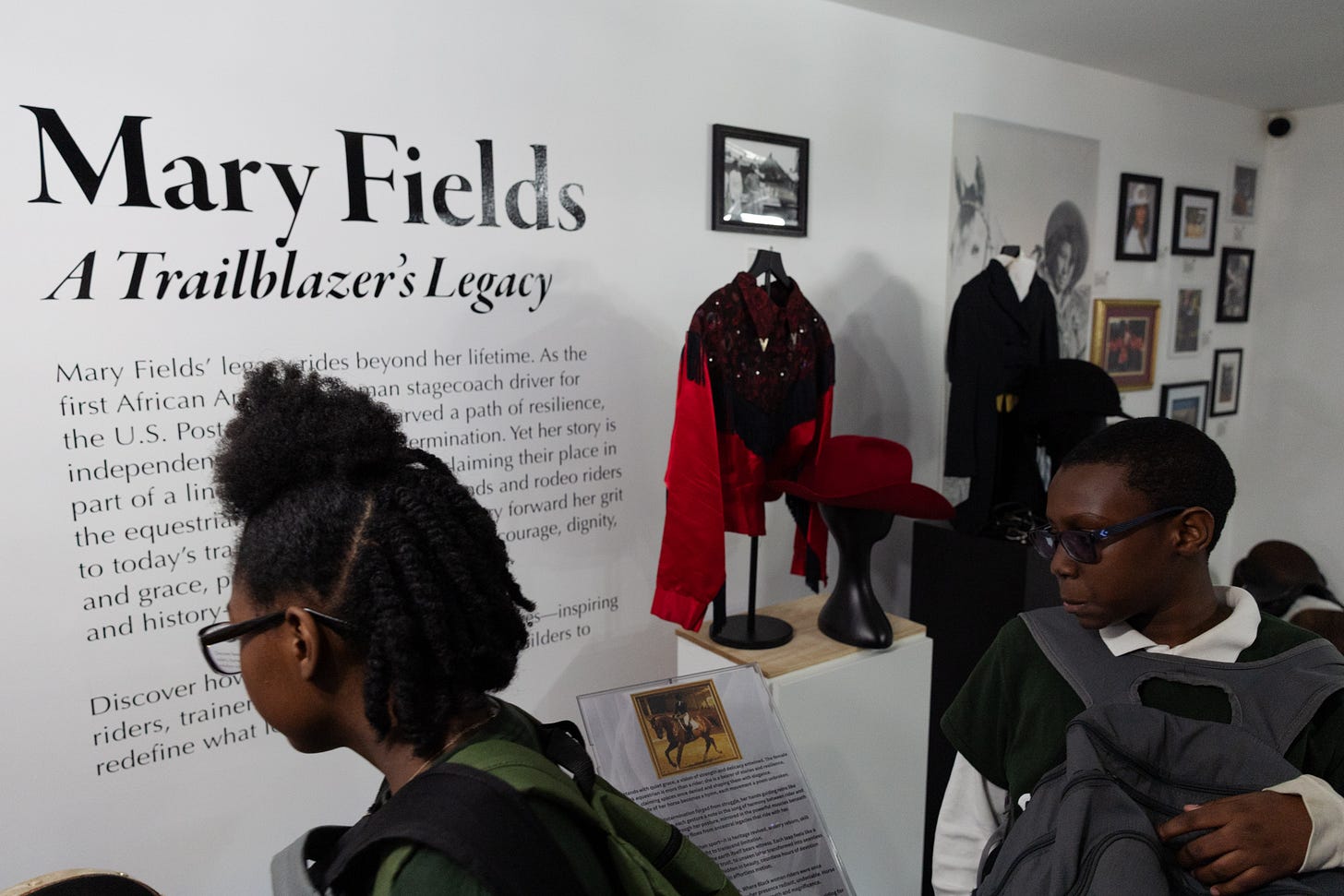
Curated by Levi Robinson, the 1,400-square-foot museum presents the triumphs, losses and ties that bind Black communities to horse culture. In the center of a large room with walls covered in old western artifacts, interactive digital screens, paintings and photos is a life-sized statue of Fields standing beside a horse and carriage.
Fields’ history is curated through the first few walls, but further into the museum are photos of the Buffalo Soldiers, African American soldiers who served in the U.S. Army in the late 19th and early 20th century. There are also contemporary important Black equestrian figures like national champion Mikhail Proctor, and Shariah Harris, the first Black woman to compete in a U.S. Open women’s polo championship.
As the museum reclaims the presence of African American experience, history and impact during pioneer times, on the range and stables, it is also home to Ebony’s own history in Hartford and across the country. Along the walls hang photos of Ebony horsewomen tournaments, with community members hoping to keep adding more local stories.
“Being a resident of Hartford, I think having history, especially Black history, is really important to teach to our young ones, and I think having something like this museum in our community is very special,” Javan Campbell, a member of the Martin Luther King Jr. Middle School staff, said.
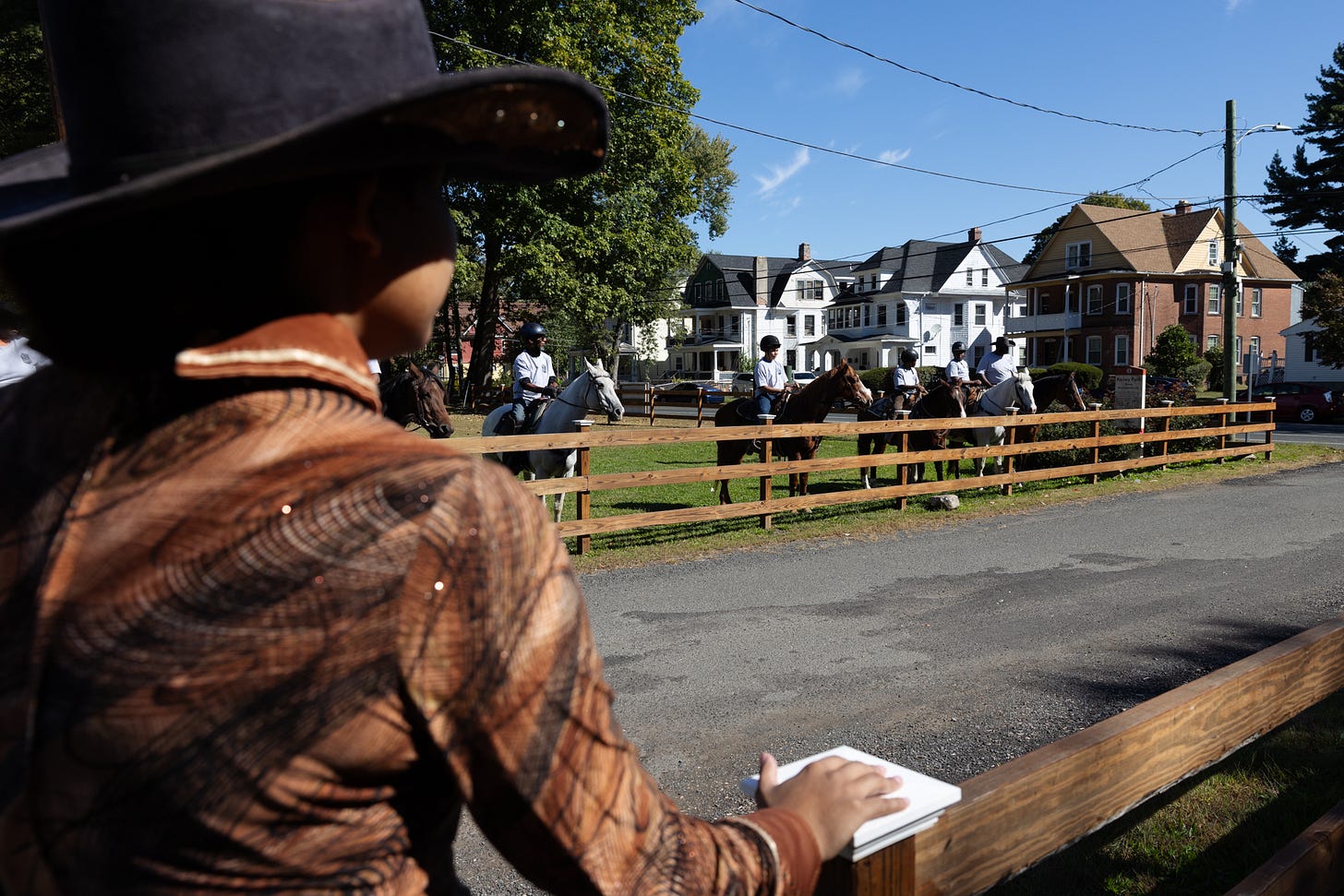
Many of his students were curious and intrigued about what Ebony is and what the museum entails. Some knew about the organization through their summer programs, but others did not. What was common among all of them, was their amazed gazes when walking through the entrance of the ceremony while six horses ridden by Keney Park’s Mounted Patrols saluted them.
Quamel Smith was one of those on mounted patrols at the entrance. He has been a park ranger for 20 years, taking care of the park, of the horses and now being a mentor for younger kids of the neighborhood.
“Ebony Horsewomen and the museum are a safe place for the inner city kids that grow up around here like me,” Smith said.
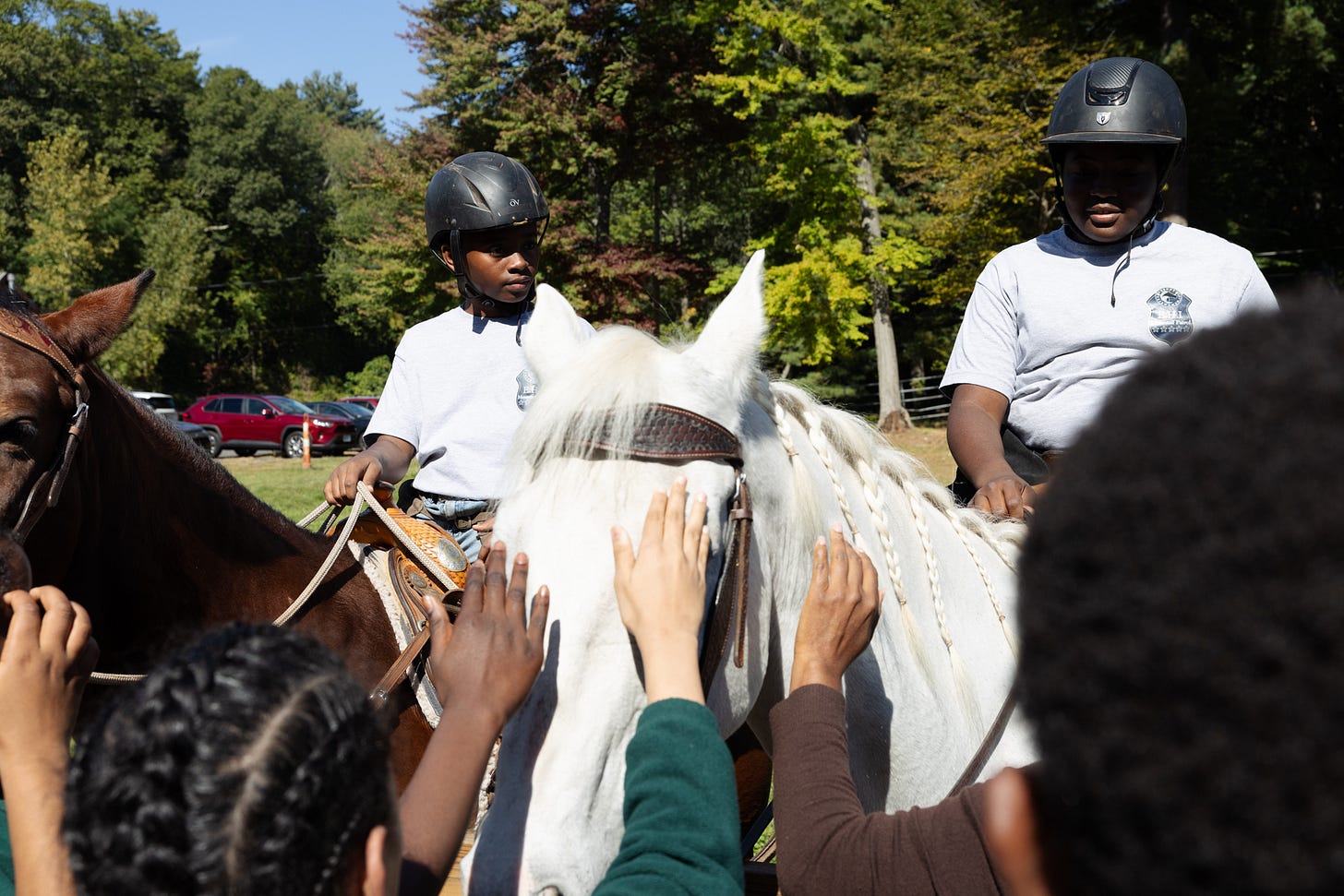
Nydin Maldonado used to ride at Ebony when she was a teenager, but stopped right after graduating high school. Now, as a 32-year-old woman, she began to ride again at Ebony as a birthday present, and became an advisory board member.
“Ebony is right in the city, and I think that’s one thing that makes it more special, you see barns and this kind of community and other cities that aren’t built like the North End of Hartford, but because of Ms. Kelly, like, we all have access to beautiful horses and now to the history with the museum,” Maldonado said.
Anyone with artifacts or treasures that they want to share with the museum can email info@ebonyhorsewomen.us.
This story was originally published by The Connecticut Mirror.

Greetings Phil,
I’ve long enjoyed your posts, they always arrive on my homepage with such a distinctive style, thank you for sharing them.
I focus on uncovering obscure histories, exploring them through a philosophical lens, and grounding my writing in historical texts.
My latest article dives into a truly intriguing tale about the birth of a monstrous child, and the appearance of a strange fish, chronicled in a 16th-century pamphlet.
I thought you might enjoy this curious journey into the strange and the forgotten:
https://open.substack.com/pub/jordannuttall/p/the-birth-of-a-monstrous-child?r=4f55i2&utm_medium=ios